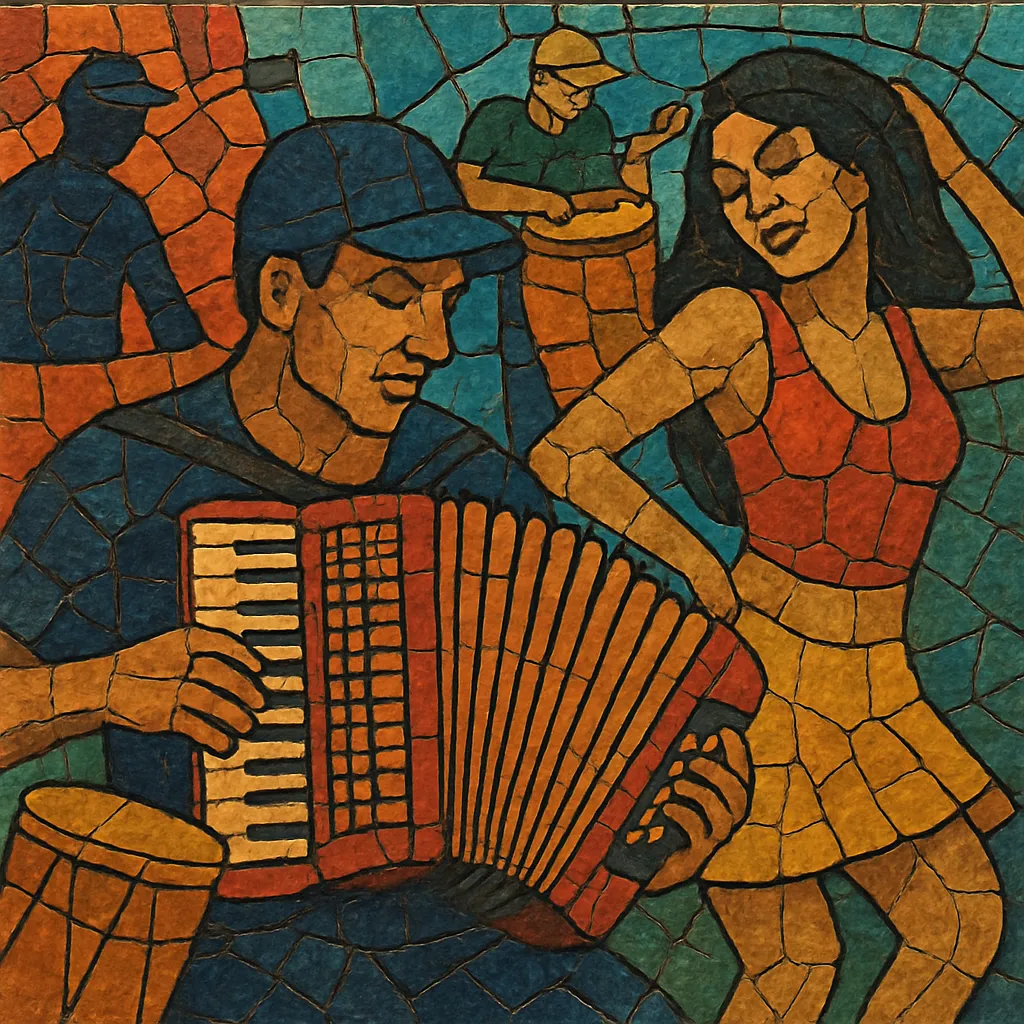Cumbia villera is a gritty, keyboard‑driven branch of Argentine cumbia that emerged from the villas miseria (urban shantytowns) in the late 1990s. It pairs the classic cumbia groove with cheap, bright synth timbres, repetitive hooks, and a raw, street‑level vocal delivery.
Lyrically, it is marked by unfiltered narratives about marginalization, neighborhood pride, nightlife, drugs, crime, police, football culture, and prison life, often using Lunfardo slang. Musically it favors minor keys, looping riffs, punchy electronic drums, güiro, and a tumbao‑style synth bass, yielding a sound that is both danceable and confrontational.
Its do‑it‑yourself aesthetics and taboo‑breaking themes made it controversial in mainstream media while helping it connect deeply with working‑class youth, later influencing newer urban fusions and digital cumbia scenes.
Cumbia villera took shape in the villas miseria of Greater Buenos Aires during the late 1990s. Building on local Argentine cumbia currents—especially cumbia santafesina and the broader Colombian and Peruvian cumbia traditions—artists began crafting a rougher, keyboard‑centric sound with frank, street‑wise lyrics. Pablo Lescano was pivotal: after working as a keyboardist and producer, he founded Flor de Piedra (1999) and soon Damas Gratis (2000), establishing the genre’s sonic grammar of bright synth leads, tumbao‑like bass lines, and driving electronic percussion.
Around 2000–2003, groups such as Damas Gratis, Yerba Brava, Pibes Chorros, and Mala Fama achieved massive popularity in Argentina. The scene exploded via neighborhood parties, pirated CDs, and youth radio shows. Its explicit themes—drugs, petty crime, police encounters, and prison—sparked moral panic and sporadic radio/TV bans, even as the music dominated dance floors and local charts.
As the initial wave cooled, cumbia villera stabilized as a core Argentine dance style. Some acts softened lyrical edges or blended in reggae, rock, and pop influences, while others leaned into the raw street aesthetic. Parallel scenes (digital cumbia and the wider Latin electronic underground) adopted elements of villera’s synth‑driven sound and looping structures.
Cumbia villera seeded newer Argentine urban fusions such as cumbia turra and RKT, and informed digital cumbia experiments. In the 2020s, a renewed interest—alongside hybrid styles that mix cumbia with trap/reggaeton—highlighted villera’s lasting cultural imprint and its role as a voice of urban working‑class identity.
• Aim for 90–105 BPM. Use a steady cumbia groove with a strong backbeat feel and consistent güiro pattern.
• Program electronic drums (kick on beat 1, syncopated snare/clap on 2 and 4, with off‑beat hi‑hats/shakers). Congas/timbales can add fills.
• Core layers: bright, inexpensive‑sounding synths (organ/accordion leads), a punchy synth‑bass playing a tumbao‑style ostinato, electronic drums, and güiro.
• Favor simple, catchy lead motifs and repetitive riffs. Use short, staccato chord stabs and octave‑doubling on hooks for energy.
• Write in minor keys (A minor, E minor, D minor are common). Keep harmony simple: i–VII–VI or i–VI–VII progressions, with occasional V for lift.
• Melodies should be direct and chant‑friendly, often using pentatonic or natural minor shapes. Repetition is key to dancefloor memorability.
• Lead vocals are upfront, nasal or spoken‑sung, with call‑and‑response chants. Group shouts on hooks add crowd energy.
• Use Lunfardo and street slang; narrate everyday life in the barrio—parties, police, friendships, football, hardship—without euphemism.
• Embrace a raw, DIY mix: prominent synth‑bass, bright mid‑range leads, and dry, upfront vocals. Avoid over‑polishing; slight grit suits the style.
• Sidechain bass lightly to the kick for pump, and use short delays or spring‑style reverbs on leads for a lively, budget‑club feel.
• Structure around intro riff, verse, pre‑chorus lift, big chant chorus, a synth solo or breakdown, then a reprise.
• Keep sections short (16–32 bars) and loop‑friendly so DJs and party bands can extend grooves live.


